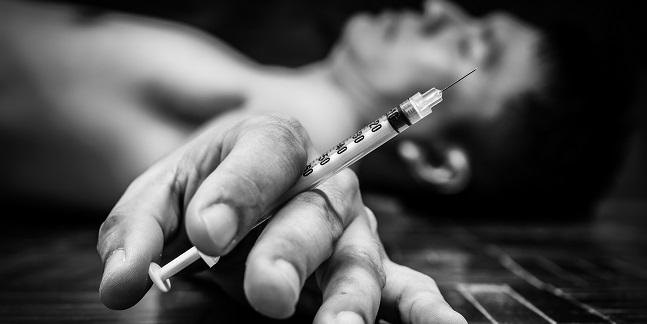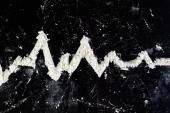AHA Highlights Unique Needs of Opioid-Associated Cardiac Arrest
Out-of-hospital cardiac arrests due to opioid overdoses are hitting cardiac ICUs. The AHA recommends specific pathways for care.

An influx of patients with cardiac arrests related to opioid-use disorders that end up on the cardiac ward despite having little wrong with their hearts was a key driver behind a new scientific statement from the American Heart Association (AHA).
Opioid-associated out-of-hospital cardiac arrests (OHCAs) have sky-rocked in recent years and many of these people, if they survive, end up in cardiac care. But as Cameron Dezfulian, MD (University of Pittsburgh, PA), who led the writing group, told TCTMD, they require very different diagnostic and treatment pathways than those with standard cardiac arrests.
“Traditionally out-of-hospital cardiac arrest, for the most part, is due to cardiac disease like myocardial infarction and heart failure, but since the opioid epidemic started, within the last decade and maybe a little longer, all of a sudden there's been an influx of very young people having out-of-hospital cardiac arrest and in the vast majority that has been as a result of opioids,” said Dezfulian.
At most hospitals, he continued, patients that survived to hospital admission have typically ended up in the cardiac ICU. “But these patients were dying of noncardiac etiology: they were basically dying because of opioid overdose and this wasn't exactly in the wheelhouse of cardiology and it wasn't what [cardiologists] normally managed. These patients didn't need coronary angiography and didn’t need diuretics. What they had was significant brain injury and really what they needed was therapeutic hypothermia and then good neuroprognostication, which isn’t always what cardiac ICUs are set up to do.”
Prior AHA resuscitation guidelines, which are issued once every 5 years (most recently in 2020), have included opioid-related arrests. However, these have typically been relegated to a section called “special circumstances.” The magnitude of the current epidemic warranted a dedicated document, Dezfulian said.
Distinct Pathophysiology, Different Care
Published last week in Circulation, the statement opens with some grim numbers on the scope of the problem: 115 deaths per day and the leading cause among US adults age 25-55. Annually, US opioid deaths increased from 9,489 to 47,600 between 2001 and 2017, costing an estimated 78.5 billion in annual healthcare expenses. Described as an epidemic within a pandemic, opioid addiction and deaths have increased during the COVID-19 era, in part due to social distancing measures, mental health crises, and lack of access to services.
“Everyone's been so obsessed with COVID—not that COVID hasn't been important—but all of the fallout from COVID has gotten very little attention, and one of the biggest things has been what's happened to folks with opioid use disorder and other kinds of addictions,” Dezfulian said. “These people were really dependent on group sessions and services and things like that and everything shut down when all this started and it has been disastrous.”
The statement goes on to provide some historical perspective, the epidemiology, as well as detailing characteristics and outcomes of opioid-associated OHCA. These arrests are more likely to occur at home and are more likely to be unwitnessed, the authors note; they’re also the most common type among adults younger than age 60. While a high proportion of patients are found in pulseless electric activity and asystole, fewer than 10% have ventricular arrhythmia. In many cases patients may be misdiagnosed as “pulseless” due to bradycardia or bradypnea.
Now that we have a vaccine, the COVID numbers are going to start dropping off—they've already started to dropping off substantially. But that's not going to happen with the opioid epidemic. Cameron Dezfulian
As Dezfulian stressed to TCTMD, cardiac arrest in the setting of opioids occurs after brain hypoxia, not as a result of reduced cardiac output, with important implications for CPR. While the AHA over the past decade has promoted compression-only CPR, this would not be beneficial—and indeed could be harmful—for an opioid-associated OHCA in which reoxygenation may be essential to survival and neurologic recovery. By contrast, compression-only CPR might serve to help circulate the drug throughout the body.
In fact, he said, “family members or loved ones of somebody who has opioid use disorder, those are the target populations who really we should be trying to teach full CPR, as well as the telephone dispatchers who are giving instructions if they suspect [opioid-associated OHCA], because right now their instructions basically are to get EMS on the way and to instruct people to do compression-only CPR. But if an opioid poisoning is suspected, they should really check to see if the family member or responder knows rescue breathing and to be promoting that.”
The document reviews the unique pathophysiology of opioid-associated arrests, as well as specific aspects of brain, heart, and pulmonary vascular pathophysiology in this setting. Prehospital, EMS, and postresuscitation care are all reviewed in turn, including surveillance for postresuscitation adverse cardiac events and neuroprognostication. Specific constraints imposed by COVID-19 are also addressed for both out-of-hospital care and with regard to discharge considerations.
Indeed, according to Dezfulian, discharge management is a critical component of opioid-associated arrest, given the opportunity for interventions afforded by hospital admission to prescribe naloxone and to educate patients and families about the need for rescue breathing during CPR. It’s also a critical opportunity to impress upon the patient and their family/loved ones that after the time spent in hospital, tolerance for a range of drugs will likely be reduced, making their risk of a subsequent overdose vastly increased, even at drug doses used in the past.
Asked what he’d most like cardiologists to take away from the AHA statement, Dezfulian stressed that the opioid epidemic isn’t going away. “They should know that, if anything, the COVID pandemic has made this problem worse and, more importantly, that this problem unfortunately is much more persistent. Now that we have a vaccine, the COVID numbers are going to start dropping off—they've already started to drop off substantially. But that's not going to happen with the opioid epidemic, because of the things that have become part of our culture, social distancing in particular, that's made the opioid epidemic even worse.”
He continued, “If you have a CCU where you're bringing in out-of-hospital cardiac arrest, there's a very good chance that your case mix is going to be enriched compared to even the recent past with opioid-associated out of hospital cardiac arrest. So knowing how to provide appropriate neuroprognostication and, for the ones who actually do survive, [knowing] what to do in terms of discharge planning: that's going to be a really crucial.”
Shelley Wood is the Editor-in-Chief of TCTMD and the Editorial Director at CRF. She did her undergraduate degree at McGill…
Read Full BioSources
Dezfulian C, Orkin AM, Maron BA, et al. Opioid-associated out-of-hospital cardiac arrest: distinctive clinical features and implications for health care and public responses: a scientific statement from the American Heart Association. Circulation. 2021;Epub ahead of print.
Disclosures
- Dezfulian reports having no conflicts of interest.





Comments